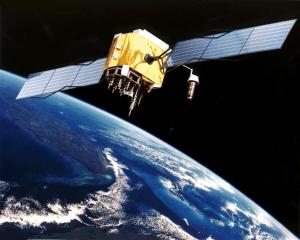Warped
Newbie
- Joined
- Jan 25, 2009
- Messages
- 7,546
- Reaction score
- 0

New Moon Photo Reveals Tracks from Tough Apollo Moonwalk
By Tariq Malik
Managing Editor
posted: 21 August 2009
06:20 pm ET
A new snapshot from NASA's newest moon probe has revealed the 38-year-old tracks leftover from a grueling moonwalk by two Apollo astronauts who tried, and failed, to reach a tantalizing crater.
The photograph was taken by a camera on NASA's Lunar Reconnaissance Orbiter (LRO) and shows the terrain surrounding the landing site of Apollo 14 astronauts Alan Shepard and Edgar Mitchell, who touched down on the moon Feb. 5, 1971 in their Antares lander. It was released Wednesday and confirmed that the astronauts came just 100 feet (30 meters) from the rim of their target, Cone Crater, before they turned back, LRO researchers said.
At first glance, the image appears to depict a stark lunar surface devoid of any evidence that humans were there. But a closer inspection can reveal the glints of the Antares lander and a nearby experiment deployed by the astronauts, which appear at the lower left of the snapshot. The tracks from the boot prints of Shepard and Mitchell appear as wispy, winding lines that are a slightly darker shade of gray from the surrounding terrain.
The region of the moon explored by Shepard and Mitchell on the Apollo 14 mission is a rocky, hilly area known as the Fra Mauro highlands. The mission was the third of six Apollo moon landings between 1969 and 1972.
LRO has beamed home an earlier view of the Apollo 14 landing site, as well as snapshots of Tranquility Base, the first manned landing site visited by Apollo 11 astronauts on July 20, 1969. Researchers overseeing the probe's main camera, called LROC, from Arizona State University released the new images.
The hunt for Cone Crater
On Feb. 6, 1971, during the second moonwalk of their 33-hour stay on the lunar surface, Shepard and Mitchell tried to reach the distant Cone Crater in order to peer down at its bottom. The crater was nearly a mile (1.4 km) away from Antares - placing the lander out of sight for the moonwalkers - and the journey was exhausting since it was almost entirely uphill.
To make matters worse, Shepard and Mitchell had trouble walking uphill in the soft lunar surface and their map of the terrain left much to be desired.
"Another problem was that the ruggedness and unevenness of the terrain made it very hard to navigate by landmarks, which is the way a man on foot gets around," wrote Shepard, who died in 1998, in an account of the mission for NASA's History Office a few years after the mission. "Ed and I had difficulty in agreeing on the way to Cone, just how far we had traveled, and where we were."
It was sometimes easier, Shepard wrote, to carry an equipment cart that was supposed to ease their burden during moonwalks because dragging it as designed was just too tough.
"And then came what had to be one of the most frustrating experiences on the traverse. We thought we were nearing the rim of Cone, only to find we were at another and much smaller crater still some distance from Cone," he wrote in the NASA account. "At that point, I radioed Houston that our positions were doubtful, and that there was probably quite a way to go yet to reach Cone."
In the new LRO image, one landmark dubbed Saddle Rock that was photographed by Shepard and Mitchell can be easily spotted, showing how close the astronauts actually were to their lunar quarry.
Shepard, one of NASA's original seven Mercury astronauts, and Mitchell ended their second moonwalk on a light note despite their frustration trying to reach Cone Crater. Shepard attached a six-iron golf club to the end of a collecting tool to become the first person to golf on the moon.
While Shepard and Mitchell worked on the lunar surface, their crewmate Stuart Roosa orbited the moon in their command module. They left the moon on Feb. 6, 1971 and returned to Earth three days later.
The $504 million LRO spacecraft, meanwhile, is part of NASA's first wave of new missions to explore the moon. The orbiter launched June 18 on a year-long mission to map the moon, study its surface composition and search for hidden water ice tucked away in the permanent shadows of craters at the lunar poles.
http://www.space.com/scienceastronomy/090821-lro-apollo14-moonwalk.html
now hopefully all those moon conspiracy nut jobs can go find something else to discredit! I think this is truly fascinating it took this long to find
here is the ultra hi res shot too: http://lroc.sese.asu.edu/news/?archives/91-Trail-of-Discovery-at-Fra-Mauro.html

Annotated figure showing the positions of various landmarks surrounding the Apollo 14 landing site. The small white arrows highlight locations where the astronauts' path can be clearly seen [NASA/GSFC/Arizona State University]






